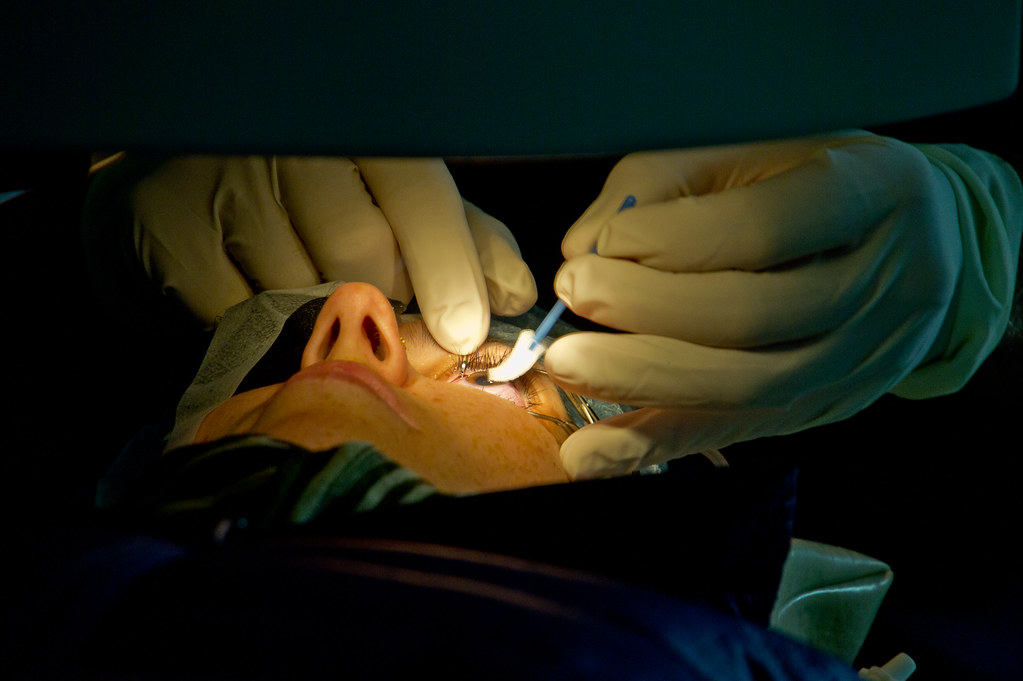In the quest for perfect vision, many people turn to LASIK eye surgery as a promising solution to correct refractive errors such as nearsightedness (myopia), farsightedness (hyperopia), and astigmatism. LASIK, which stands for Laser-Assisted In Situ Keratomileusis, is a popular and advanced form of eye surgery that can significantly reduce or even eliminate the need for glasses or contact lenses. However, like any surgical procedure, LASIK comes with its own set of benefits and risks. In this comprehensive guide, we will delve into what LASIK eye surgery entails, its advantages, potential side effects, and important considerations to help you make an informed decision.

Benefits of LASIK Eye Surgery
1. Improved Vision
The most immediate and significant benefit of LASIK surgery is the improvement in visual acuity. Studies have shown that approximately 96% of patients achieve their desired vision after surgery. For many, this means saying goodbye to corrective lenses.
2. Quick Procedure and Recovery
The LASIK procedure itself is quick, usually taking about 10 to 15 minutes for both eyes. Moreover, the recovery time is relatively short. Many patients report noticeable improvements in their vision within 24 hours, and the majority return to their normal activities within a day or two, making it a convenient option for those with busy lifestyles.
3. Long-Lasting Results
After a stabilization period of about three to six months, the improvement in vision is usually permanent. While some patients might need a touch-up procedure, most enjoy their new level of vision without further surgery.
4. Reduction in Allergy Symptoms
For contact lens wearers, LASIK can reduce the eye irritation and dryness associated with lens use, especially in allergy-prone individuals. This can lead to a more comfortable and enjoyable quality of life.
Risks and Complications of LASIK Eye Surgery
1. Potential Side Effects
Common side effects of LASIK include dry eyes, which can be severe in some cases, and temporary vision disturbances such as glare, halos around lights, and difficulty driving at night. These usually improve within a few weeks to months.
2. Undercorrections, Overcorrections, and Astigmatism
There’s a possibility that LASIK might not remove enough or might remove too much corneal tissue, leading to undercorrections or overcorrections, respectively. Similarly, uneven tissue removal can cause astigmatism. These issues might require additional surgery or correction with glasses or contacts.
3. Rare Complications
While uncommon, complications such as eye infections, flap issues (where the corneal flap does not properly adhere post-surgery), and even vision loss can occur. Choosing a highly experienced surgeon can minimize these risks.
Making the Decision for LASIK Eye Surgery
1. Consultation and Eligibility
A thorough eye examination by a qualified ophthalmologist is crucial to determine if you are a good candidate for LASIK. Factors such as corneal thickness, eye health, age, and stable vision prescription play a significant role in this determination.
2. Understanding Your Expectations
It’s important to have realistic expectations about what LASIK can and cannot do for you. While the procedure offers remarkable improvements in vision, it might not result in perfect vision for everyone. Discussing your vision goals with your surgeon is key.
3. Weighing Benefits Against Risks
For many, the benefits of LASIK eye surgery—such as improved vision and lifestyle convenience—outweigh the risks. However, it’s essential to carefully consider the potential side effects and complications, keeping in mind your personal health, lifestyle, and tolerance for risk.
4. Choosing the Right Surgeon
Selecting an experienced and reputable surgeon is one of the most critical steps in your LASIK journey. Look for a surgeon who has performed thousands of LASIK procedures and who is willing to discuss their success rates and the likelihood of complications openly.
Conclusion
LASIK eye surgery represents a significant advancement in refractive surgery, offering millions of people the chance to experience life with clear vision. While the procedure has a high success rate and offers numerous benefits, it is not without its risks and potential complications. By thoroughly researching, consulting with experienced professionals, and carefully considering your own needs and health, you can make an informed decision about whether LASIK is right for you. Remember, the goal is not only to see clearly but to do so in a way that enhances your overall quality of life and well-being.
Stelly is a health enthusiast and a devoted mom who channels her passion for wellness into her writing. With a strong focus on living a balanced and healthy lifestyle, she shares insights on everything from nutrition to self-care. Her love for yoga and staying active reflects her commitment to personal well-being, and she enjoys finding peaceful moments to read and recharge. Stelly's experiences as a mother and her dedication to health inspire her to offer practical, relatable advice to others looking to enhance their well-being while navigating the demands of daily life.
